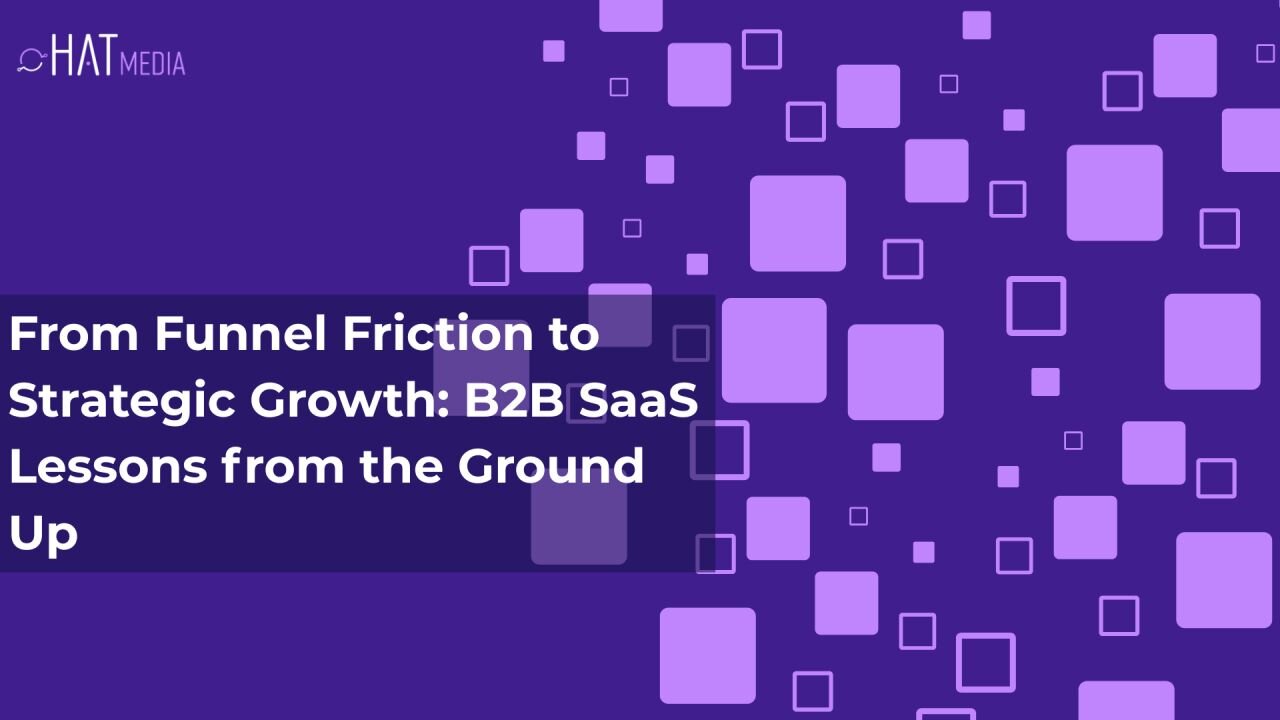From Sites to Systems: What Construction Tech Teaches Every Operator About Scale

If you run marketing inside a SaaS company, you have probably felt the tension between what you can measure today and what actually moves the market over months and years. Performance campaigns report clean numbers. Brand work often does not. In our latest SaaS Stories conversation, Stephanie Clapham, Director of Research at Latana, unpacked how next generation brand tracking is closing that gap. Rather than write a guest profile, this piece distills the practical takeaways you can apply right now, whether you are the first marketer at an early stage startup or leading a mature B2B team across regions.
Why classic brand tracking keeps failing modern teams
Most brand trackers were designed for a world of slow research cycles, email panels, long surveys and tidy quarterly decks. They break down in a market that moves by the week and where decision makers live on mobile. The cost is not only money. It is missed signals. When your tracker cannot reliably reach the audience you care about, or when you are forced to treat each wave of data like an isolated event, you end up debating data quality instead of decisions.
Stephanie’s core critique is simple. Traditional systems make brand measurement feel like an art because the methods are outdated. You see it in three chronic symptoms. Access to the right respondents is limited. Samples are too small or too arbitrary to support segmentation. Confidence intervals are ignored, so teams overread noisy movements. The result is a dashboard that looks neat but struggles to guide where to invest.
Listen to the full conversation
We go deeper on each of these points in the episode, including concrete examples of ad based sampling design, why modular trackers outperform kitchen sink approaches, and how to use confidence intervals in stakeholder meetings without losing the room.
2) Your MVP should carry weight on a real day, not a perfect day
One of the most useful moments from Jordan’s story was the timing of their first roll-out. LoopLogix went live inside their construction business during a weather spike that sent job volume soaring. Overnight workload rose by about sixty percent. That is the opposite of a controlled pilot, which is exactly why it mattered. Products that only survive calm seas do not deserve production.
If you are validating fit, pick a day that reflects the real stress of your operation. Can the tool help a co-ordinator reassign crews in minutes, not hours. Can finance receive clean, timely records without follow-up. Can managers get a live snapshot of progress and risk without an extra meeting. Those are the signals of fit that translate into durable value and adoption.
3) Spreadsheets are not the enemy. Stale data is.
Excel gets blamed for a lot. The deeper issue is that spreadsheets are often static, personal, and late. They serve the person who made them, not the team that depends on the information. Replacing a spreadsheet with a dashboard is not enough if the inputs are still manual and delayed.
What wins trust inside busy teams is live, shared context. Field activity should feed the operating system in near real time. Leadership should see the same truth as site managers and co-ordinators. When a single platform becomes the source of truth, one-to-one status meetings and sync calls start to disappear because the answers are already visible.
4) Implementation is a change project first, a software project second
Convincing operators to abandon familiar tools is a teaching job. The companies that adopt quickly do not start with features. They start with a proper discovery conversation. What hurts most today. Where are we losing time or money. What decisions do we make late because we lack data. When the product demo is shaped around those pains, teams are more willing to switch because the early wins are obvious.
Equally important is fit. Not every prospect is ready. If leadership buy-in is weak, or the plan to train and onboard is thin, walk before you run. A small, well supported deployment that delivers clear wins will create more momentum than a broad installation that stalls.
5) Efficiency is capacity. Capacity is optionality.
Construction businesses live with demand spikes, labour shortages, and thin margins. That combination punishes any waste in the system. The goal of technology is not dashboards for their own sake. It is to create capacity. Capacity means a co-ordinator can manage more jobs with less stress. It means a superintendent can see risk early and reshuffle before cost hits the P&L. It means finance can close the month faster with fewer adjustments.
When you manufacture capacity, you earn optionality. You can take on more volume without adding headcount. You can protect margin in a tight job. You can say yes to a better client mix. Capacity today is the freedom to choose tomorrow.
6) Customer advocacy is the highest return marketing channel
Jordan credits growth to a simple loop. Deliver value that operators feel in their day. Make implementation credible and supportive. Stay close, gather feedback, and act on it. That combination turns users into advocates who speak for you on job sites, at industry events, and in executive meetings. Paid campaigns and partnerships help, and LoopLogix has seen success there too, but nothing converts like a respected operator telling a peer that a tool made their week easier.
If you are early, this is the clearest place to invest. Define your ideal customer profile tightly. Win them. Make them successful. Let them carry your story.
7) AI’s near term job is to remove drudgery and surface judgement moments
It is tempting to imagine robots laying bricks and autonomous cranes. Reality is less cinematic and more valuable. The construction tasks that will change first are the administrative and co-ordination tasks that eat time and create delays.
Practical applications are already paying off. Routing field techs more intelligently. Auto assembling compliance records from captured events. Turning unstructured site updates into structured progress data. Suggesting schedule changes when weather, materials, or subcontractor capacity shifts. Summarising job risk by exception so leaders focus attention where it matters. Think of AI as a way to compress the distance between what happened and what you should do next.
8) Profitability is a data problem dressed up as a delivery problem
Australia’s building sector has seen too many collapses in recent years. Cash flow risk and thin margin are chronic. Technology cannot fix macroeconomics, but it can arm leaders with timely, decision-grade data. That starts with job-level truth. Are we on plan. Where are we slipping. Which subcontractors consistently deliver to spec and schedule. Which scopes hide change order risk. You cannot manage what you cannot see. A live operating system makes profitability manageable instead of mysterious.
9) Talent still decides the outcome
Jordan returns repeatedly to the theme of people. Cross-functional talent with domain depth and product judgement. Partners who tell you the truth, not what you want to hear. Early team members who wear multiple hats and learn fast. Technology amplifies good teams. It does not replace them. If you are scaling, treat team design with the same rigour as product design.
How to Apply These Lessons Beyond Construction
- Map your co-ordination tax. List every tool and hand-off in your core workflow. Consolidate or connect until information flows without manual rework.
- Validate under load. Choose a roll-out window that reflects peak stress and measure time saved, errors avoided, and jobs per person before and after.
- Replace late spreadsheets with live context. If data is still batch updated, you have not solved the problem yet.
- Sell by discovery. Anchor demos in specific pains and define two to three early wins that a frontline user will feel within the first weeks.
- Instrument profitability. Push for job-level dashboards that surface variance early and connect operational events to financial consequences.
- Deploy AI where it removes toil or accelerates judgement. Start with routing, summarisation, compliance packaging, and exception detection.
The big takeaway. Whether you are pouring slabs or shipping sprints, the work is the work. Centralise truth, test under pressure, invest in adoption, and free people to do their best work. The gains compound faster than you think.

